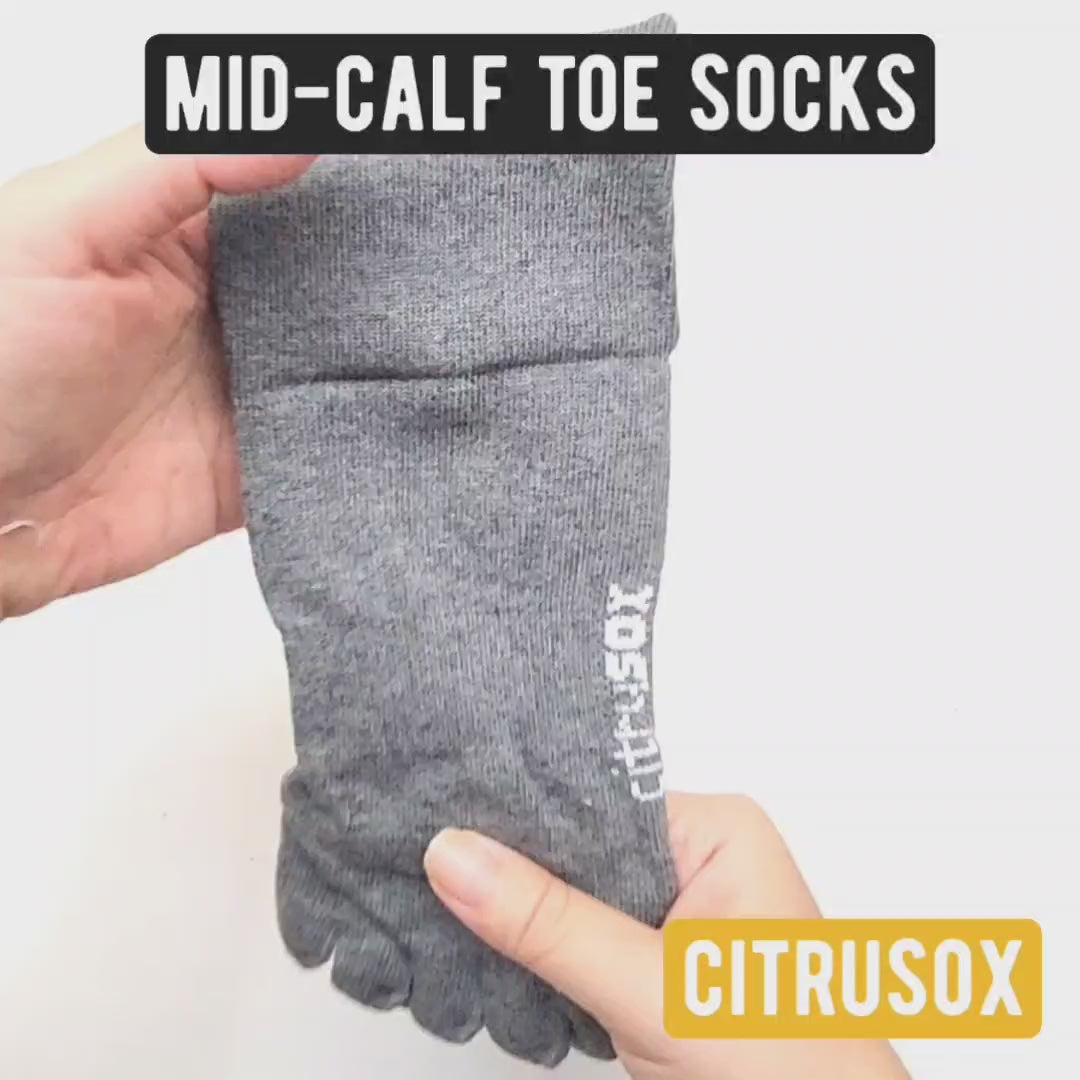Cozy Winter Socks: Stay Warm and Stylish All Season Long
Do your toes turn cold every winter? Have you had enough of cold toes ruining your warm nights? The correct socks can make you warm and comfortable all season long. At Citrusox, we think that ankle socks and wool socks are not only extras—they are must-haves for enduring the cold season without having to give up on style.
Why Your Feet Get Cold in Winter
Our feet tend to lose heat quickly because they have less muscle to generate warmth. Cold weather reduces blood circulation, making it harder to keep them warm. Wearing the right socks can help by providing insulation, trapping warmth, and keeping your feet dry.
Why Cozy Socks Matter in Winter
Winter temperatures can be unforgiving, and your feet are often the first to feel the chill. Wearing quality wool socks helps to:
-
Retain body heat, keeping your feet warm even in freezing weather.
-
Wick away moisture, preventing sweaty and uncomfortable feet.
-
Provide extra cushioning for all-day comfort.
Whether you’re relaxing indoors or stepping out, the right pair of socks can transform your winter experience.
The Benefits of Wool Socks
Wool socks are one of the best choices for winter because they:
-
Retain heat better than cotton or synthetic materials.
-
Wick away moisture to keep feet dry and prevent odor.
-
Provide cushioning for extra comfort, especially when wearing boots.
Merino wool, in particular, is a popular choice because it is soft, breathable, and naturally temperature-regulating.
When to Wear Ankle Socks in Cold Weather
While ankle socks are often associated with warm weather, they can still be worn in winter with the right materials. Opt for thermal ankle socks made of wool or thicker fabrics to keep your feet warm. They are great for:
-
Indoor wear when paired with slippers.
-
Layering under boots for extra warmth.
-
Activities like exercising or lounging at home.
How to Choose the Best Socks for Winter
To keep your feet warm and comfortable, consider these factors when selecting socks:
-
Material: Wool is ideal for warmth, while synthetic blends help with durability.
-
Thickness: Thicker wool socks are great for extreme cold, while mid-weight options work well for everyday wear.
-
Fit: Make sure your socks are snug but not too tight, as poor circulation can make feet colder.
-
Breathability: Moisture-wicking fabrics prevent damp feet, which can lead to discomfort and even frostbite in extreme conditions.
Why Choose Citrusox?
At Citrusox, we understand that the right socks can make a big difference in comfort and warmth, especially during winter. Our collection includes high-quality wool socks and ankle socks designed for insulation, breathability, and all-day comfort. With a focus on durable materials and thoughtful designs, we ensure that every pair provides the perfect balance of warmth and style, helping you stay cozy no matter the weather.
Conclusion
The right cozy winter socks can make all the difference in keeping your feet warm and comfortable. Whether you're outdoors or lounging at home, wool socks and insulated ankle socks help retain heat and prevent moisture buildup.
At Citrusox, we offer socks designed for both warmth and durability. With high-quality materials and thoughtful designs, our collection keeps your feet cozy all season. Reach out to us today and let us help you find the perfect pair for winter!
FAQs
The best socks for winter are wool socks or thermal socks that provide insulation and moisture-wicking properties. Thick ankle socks made from wool blends or synthetic materials are also great for keeping feet warm while ensuring breathability.
Cozy socks, especially wool socks, should be washed in cold water on a gentle cycle to prevent shrinking. Avoid using harsh detergents and always air dry to maintain their softness and warmth.
Yes, wool socks are one of the best choices for winter because they naturally retain heat while allowing moisture to evaporate. This keeps feet warm, dry, and comfortable in cold weather.
Good winter socks should have insulation for warmth, moisture-wicking properties to keep feet dry, and cushioning for extra comfort. High-quality wool socks often have thermal properties that regulate temperature while remaining breathable.
Merino wool is considered the warmest material for winter socks, offering excellent insulation while remaining lightweight and breathable. Other warm materials include cashmere, alpaca wool, and thermal synthetic blends.
For cold feet, wool socks or thermal socks with extra padding and insulation work best. Moisture-wicking materials also help prevent dampness, which can make feet feel even colder.
Cotton socks are not ideal for winter because they absorb moisture and do not provide proper insulation. Instead, opt for wool socks or synthetic thermal socks for warmth and dryness.
Avoid cotton in winter because it traps moisture and does not insulate well. Instead, choose wool socks or thermal synthetic fabrics that help retain body heat.
Linen is a lightweight fabric that does not provide enough warmth for winter. Instead, wool socks and wool-blend clothing are better choices for insulation in cold weather.
Wool is significantly warmer than cotton because it retains heat while allowing moisture to evaporate. Wool socks are ideal for winter, while cotton socks are better suited for warm weather.
Yes, there are 100% wool socks, but they are often blended with synthetic fibers for added durability and elasticity. Merino wool socks are a popular choice because they are soft, warm, and moisture-wicking.
For warm weather, breathable and moisture-wicking ankle socks made from lightweight wool or synthetic blends are ideal. Avoid thick socks, as they can cause overheating and discomfort.
Synthetic thermal socks made from polyester or acrylic blends can be a great alternative to wool socks. Bamboo and fleece-lined socks also provide warmth and comfort without using wool.















